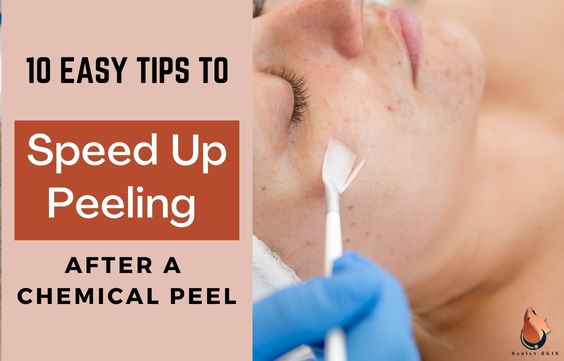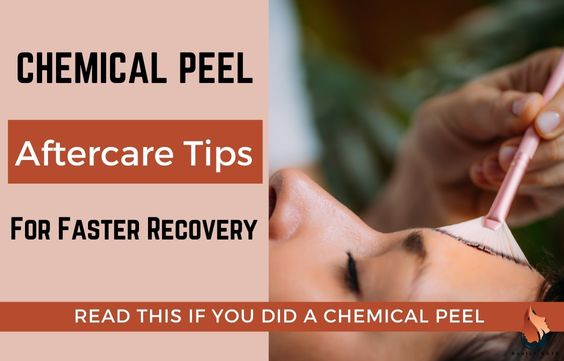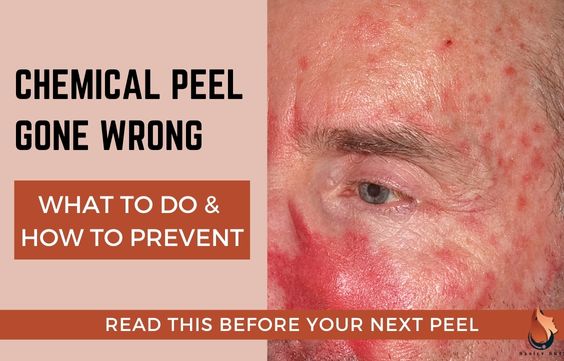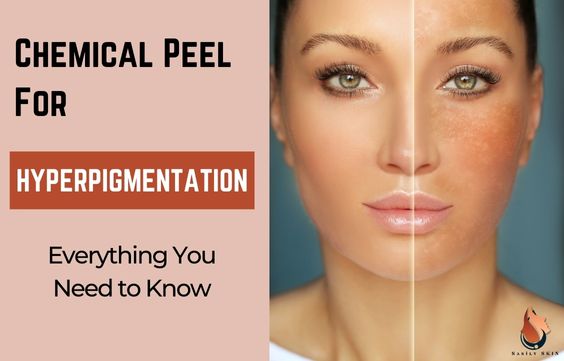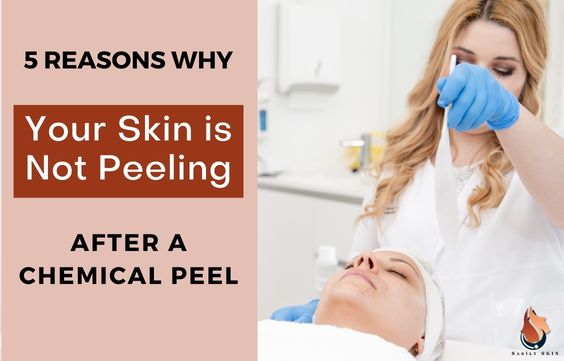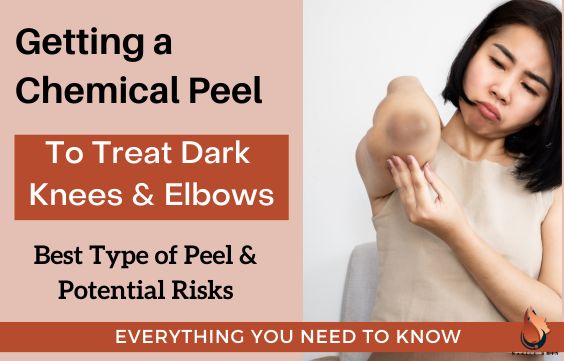What to Expect After a Chemical Peel & When Do You Recover
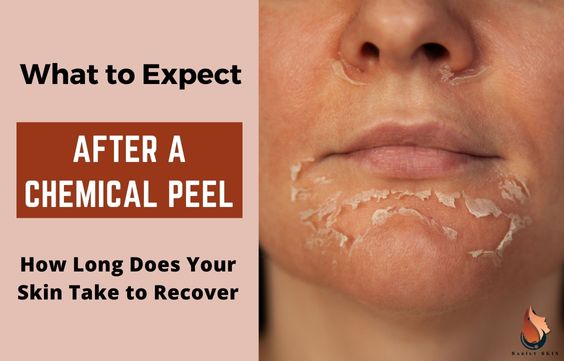
Chemical peeling is a procedure in which an acid is used to remove the top layer of your skin to effectively exfoliate and promote skin cell regeneration.
But even though this is a topical treatment, it is invasive to the skin so you can expect to see some visible effects on your skin.
Now in this article, I am going to explain how long it takes to recover from a chemical peel and guide you on what you can expect after a peel is done.
How Long Does it take to Recover from a Chemical Peel
Chemical peels can be light, medium, or deep. The type of peel will determine how strong the acid will be and how deeply it will penetrate and affect the skin.
This will, in turn, affect how long the skin will take to heal ad recover from the procedure. Citation.
Here is a breakdown of how long skin is expected to take to recover, under normal conditions, for the different general types of peels:
| Type of Peel | Expected Healing Time |
| Light | 1 to 7 Days |
| Medium | 7 to 14 Days |
| Deep | 14 to 21 Days |
The recovery process and time will vary depending on:
- Your skin type
- The condition of your skin
- The kind of chemical peel that you use
- Your pre-peel care
- Your post-peel care
All of these factors will play a role in how long you take to recover.
Related Article – Chemical Peel AfterCare Tips To Heal Fast & Common FAQ
What to expect after a Chemical Peel
1- Light Peels (Such as Glycolic acid)
A light peel penetrates and exfoliates the top layer of the skin (the epidermis).
Remember that it is normal for your skin to look like a hot mess before it starts to look better during this process. Skin exfoliation using acids is not a pretty process.
But once the peeling phase passes, the new skin cells will emerge, giving you soft, glowing skin. Generally, it will take about 3 to 5 light peels to achieve your skin goals.
If you have had a light/superficial peel (sometimes called a lunchtime peel), you can expect:
- Redness followed by scaling which will last between 3 and 7 days. This will almost look and feel like a sunburn.
- Visible peeling and scaling may not always occur in some people while in others they may occur more than expected. This will depend on your skin type, condition, and genetics.
- Depending on your skin, you may have some irritation and itchiness, but this will be mild and easily controlled.
To manage your symptoms during the process, you can apply lotion or cream as instructed until your skin has healed. You should also apply sunscreen regularly after your skin has healed. Citation.
You may wear makeup as early as the next day after your peel, but just in case, you should consult your dermatologist/doctor first and try a little at a time to monitor for reactions. Citation.
2- Medium Peels (TCA Or Salicylic Acid Peels)
A medium-depth peel penetrates down to the middle layer of the skin (the dermis) and will have a greater impact on exfoliation than a light peel.
Generally, medium-depth peels work well for hyperpigmentation, acne scars, and other skin conditions and will require just one peel.
However, depending on the severity of the condition, your doctor will decide how many sessions you may need based on the outcome of each one. A medium peel may be repeated every 6 to 12 months if necessary. Citation.
If you have had a medium peel you can expect:
- Redness, stinging, swelling, and flaking of the skin
- Swelling will sometimes last for or worsen over 48 hours after the procedure.
- Blisters may develop and will break open.
- Skin will crust over and start peeling off within 7 to 14 days.
Video Of What to Expect After a Medium Depth Peel
How to Manage the Effects After a Medium Depth Peel
To manage your symptoms during the process, enlist the help of your doctor.
- As directed, you should perform daily soaks, apply ointments after each soak, and moisturize to avoid over-drying of the skin.
- You should be careful to avoid direct sun exposure until your skin has healed and remember to apply your SPF.
- If needed, your doctor may prescribe an antiviral medication for you to take for up to 14 days.
- You may wear makeup after 5 to 7 days, but this will depend on the condition of your skin during the peel and it is best to consult your doctor first. Citation.
Please remember that it is entirely normal for your skin to look rather angry before it begins to look like fairy princess skin.
Medium-depth chemical peels are less pretty than the peeling situation of light peels. However, the gorgeous skin which comes at the end of the peeling process is well worth the struggle.
3- Deep Peels (Phenol)
Deep chemical peels are almost surgical procedures done using phenols (the strongest acid approved for cosmetic use), sedation, and local anesthesia.
Phenols penetrate down to the lowest layer of the skin and will result in a more intense reaction during the process and a longer healing time.
One treatment with a deep chemical peel will produce long-lasting and dramatic results that can last up to 10 years. You can only have one deep chemical peel ever.
Please keep in mind that a deep chemical peel is very invasive to the skin and will take the longest to recover from. Because of how deeply phenols penetrate the skin and the extent to which it exfoliates.
This process will be the least pretty and possibly uncomfortable. If you have had a deep chemical peel you may expect:
- Your skin will need to be covered by a bandage with surgical dressing for a few days.
- Redness, swelling, crusting, peeling, itching, burning and throbbing.
- Swelling may become severe and may need a cool compress.
- Peeling, crusting, blistering and irritation may last for several days to weeks.
- Redness may persist for months afterward.
- You may need to take antivirus medications as prescribed by your doctor if necessary.
It is normal for your skin to look like a trainwreck and to take a while to heal. However, after weeks of healing, your skin will look brand new and the effects will be long-term (years).
With proper skincare afterward, you will still be seeing the benefits years ahead. Citation.
How to Manage the Effects of a Deep Peel
To manage your symptoms during the process, you will need to keep performing soaks and applying ointments as prescribed by your doctor several times daily for about two weeks at least. Citation.
You may continue to use a cool compress to help with the swelling and throbbing. You may use painkillers as directed by your doctor.
You will need to wait at least 14 days before attempting to use any makeup at all. Even when the 14 days have passed, depending on the condition of your skin, you should patch test your makeup first and start gradually. Citations.
What to Expect if a Chemical Peel Goes Wrong
Chemical peels are intense skin treatments and if they are not done correctly they can result in complications. Some of these may include:
- Persistent Swelling, itching, burning, and pain
- Severe Blistering
- Chemical Burns (click here to read more)
- Persistent skin discoloration
- Increased lines and wrinkles in the skin
- Breakouts in the form of milia, pimples, cysts, or pustules
- Allergic reactions
- Infections
Each of these complications will progress differently, have different treatment options, and have different ways in which they can be prevented. All of these will also vary depending on you, your skin, the type of peel, and your doctor.
To read more on possible complications of chemical peels, click here.

